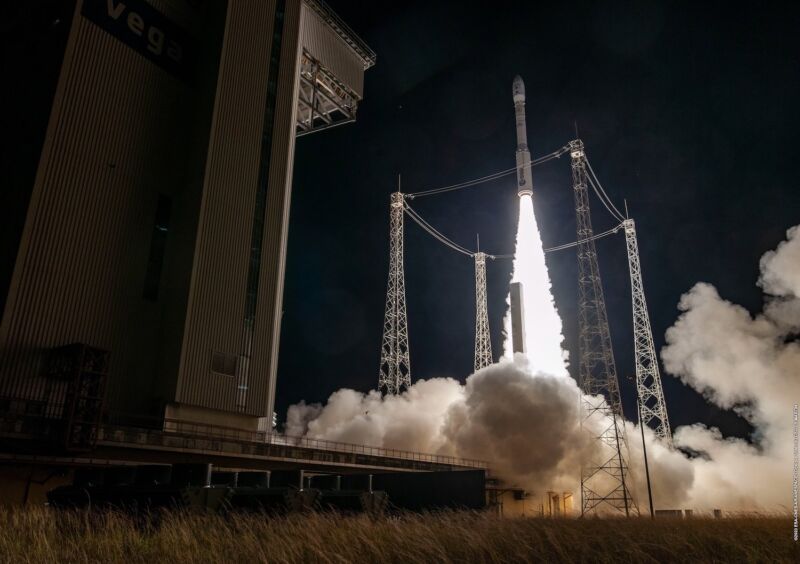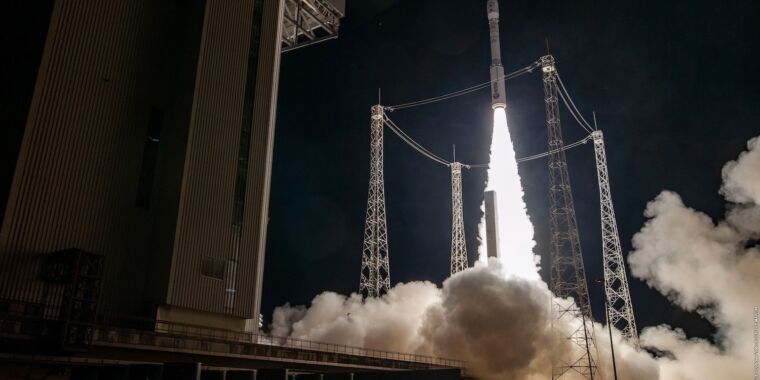
The Italy-based aerospace company Avio has not had the best of luck with its Vega rocket, which has always been something of an odd duck in the launch industry. Now, as the rocket nears its final launch, it’s missing some critical components.
The European Spaceflight newsletter reports that two of the four propellant tanks on the fourth stage of the Vega rocket—the upper stage, which is powered by dimethylhydrazine and nitrogen tetroxide solid fuel—went missing earlier this year.
Now, it seems that the propellant tanks have been found. However, the newsletter says, the tanks were recovered in a dismal state, crushed, alongside metal scraps in a landfill. Someone, apparently, had trashed the tanks. This is a rather big problem for Avio, as this was to be the final Vega rocket launched, and the production lines are now closed for this hardware.
The mission
This Vega rocket is due to launch the 1,250-kg BIOMASS satellite for the European Space Agency, a mission that will employ a P-band synthetic aperture radar to assess the health of forests on Earth and determine how they are changing. The satellite is valued at more than $200 million.
It’s the kind of mission the Vega rocket was created for. First launched in 2012, the Vega rocket has a lift capacity of a little more than 2 metric tons to low-Earth orbit. This makes it a little more powerful than small-lift rockets, but it’s not really a medium-lift vehicle. It has about one-tenth the lift capacity of a Falcon 9 rocket, for example.
One big problem for Vega is its price. While the vehicle’s marketer, Arianespace, does not publicly publish prices, a Vega launch costs approximately $35 million to $40 million. This was barely competitive a decade ago when the vehicle debuted. Now it’s out-of-bounds with a new generation of small launch companies that offer lower prices, or the more reliable Falcon 9, which only costs about 50 percent more for much more lift capacity.
Another challenge has been reliability. The Vega rocket had suffered two failures in its last seven launches and has a lifetime failure rate of 10 percent across 21 launches.
Avio developed the slightly larger Vega C rocket, which is also solid-fueled, to offer more lift and reliability at a comparable price. The Vega C rocket made its debut in 2022 with a success. But on its second mission in December 2022, the second stage failed. The Vega C will not return to flight until at least a year from now.
No great options
Because of the ongoing issues with the Vega C rocket, the European Space Agency really has no other domestic options in the near term for getting its BIOMASS satellite into space. The Ariane 6 rocket will not make its debut for at least six months, and it has a lengthy backlog and would at least double the launch costs. It’s doubtful that European officials will want to turn to SpaceX and its Falcon 9, either.
So what will Avio do? According to European Spaceflight, officials are working on two options. The first involves using old propellant tanks that were built for qualification tests of the Avio rocket more than a decade ago. There are four such tanks, and the company could subject two of them to re-qualification tests and, if those tests go well, employ the other two tanks for the launch. Understandably, engineers have some concerns about the integrity of these tanks, which in addition to their age were never meant to fly.
Another option is to modify the upper stage that is used by the Vega C rocket. While there are some commonalities between the Vega and Vega C upper stages, there are differences, and the new AVUM+ upper stage was not intended to fly on the original Vega rocket. It remains to be seen whether the European Space Agency is willing to support the launch of its valuable satellite on such a kludged-together rocket.








